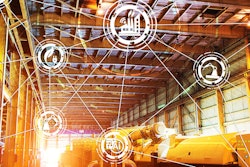The terms “horizontal integration” and “vertical integration” are familiar from a number of contexts. From the operational perspective, a horizontally integrated company focuses its activities around its core competencies and establishes partnerships to build out an end-to-end value chain. A vertically integrated company, on the other hand, keeps as much of its value chain in-house as it can—from product development to manufacturing, marketing, sales, and distribution.
In the world of business growth strategy, horizontal integration refers to the acquisition of companies that address the same customer base with different but complementary products or services. In this way, the acquiring company can increase market share, diversify their product offerings, and so on. A vertical growth strategy, on the other hand, involves acquiring companies that bring new capabilities to the table in order to reduce manufacturing costs, secure access to important supplies, respond faster to new market opportunities, and more.
When it comes to production, horizontal integration has come to refer to well-integrated processes at the production-floor level as well, while vertical integration means that the production floor is tightly coordinated with higher-level business processes such as procurement and quality control.
In this article we explore how Industry 4.0 has further amplified the importance of horizontal and vertical integration, making them the very backbone on which the Smart Factory is built.
Horizontal/Vertical Integration As the Backbone of Industry 4.0
When it comes to horizontal integration, Industry 4.0 envisions connected networks of cyber-physical and enterprise systems that introduce unprecedented levels of automation, flexibility, and operational efficiency into production processes. This horizontal integration takes place at several levels:
- On the production floor: Always-connected machines and production units each become an object with well-defined properties within the production network. They constantly communicate their performance status and, together, respond autonomously to dynamic production requirements. The ultimate goal is that smart production floors will be able to cost-effectively produce lot sizes of one as well as reduce costly downtime through predictive maintenance.
- Across multiple production facilities: If an enterprise has distributed production facilities, Industry 4.0 promotes horizontal integration across plant-level Manufacturing Execution Systems (MES). In this scenario, production facility data (inventory levels, unexpected delays, and so on) are shared seamlessly across the entire enterprise and, where possible, production tasks are shifted automatically among facilities in order to respond quickly and efficiently to production variables.
- Across the entire supply chain: Industry 4.0 proposes data transparency and high levels of automated collaboration across the upstream supply and logistics chain that provisions the production processes themselves as well as the downstream chain that brings the finished products to market. Third-party suppliers and service providers must be securely but tightly incorporated horizontally into the enterprise’s production and logistics control systems.
Vertical integration in Industry 4.0 aims to tie together all logical layers within the organization from the field layer (i.e., the production floor) up through R&D, quality assurance, product management, IT, sales and marketing, and so on. Data flows freely and transparently up and down these layers so that both strategic and tactical decisions can be data-driven. The vertically integrated Industry 4.0 enterprise gains a crucial competitive edge by being able to respond appropriately and with agility to changing market signals and new opportunities.
The Challenges of Horizontal/Vertical Integration in Industry 4.0
The horizontal and vertical integration aspirations of Industry 4.0 are quite clear and easy to understand. But, as is often the case in life in general, the challenges to achieving this vision are considerable.
Breaking Down Silos
Industry 4.0 levels of horizontal and vertical integration require breaking down data and knowledge silos, which is never an easy task. It starts with the production floor itself, where equipment and production units from diverse vendors provide varying levels of automation are equipped with a wide range of sensors and use different communications protocols. In other words, they often do not “speak the same language,” and a meta-network needs to be established that resolves these communications disparities.
There are many other data silos and knowledge bases in an organization that have to be broken down in order to achieve these enhanced levels of integration. Here the challenge is often less about interoperability and more about changing the organizational culture. Data from departments and divisions that are used to carefully guarding their data and expertise—quality assurance, engineering, logistics, sales and marketing, and more—have to be aggregated intelligently and seamlessly so that production processes are fully aligned with the organization’s long- and short-term business needs.
Data Security and Privacy
Horizontal integration in Industry 4.0 requires the sharing of data outside the organization with suppliers, subcontractors, partners, and, in many cases, customers as well. This level of transparency is highly empowering in terms of production agility and flexibility, but it raises the challenge of ensuring that the data of all stakeholders are kept secure and accessible solely on a need-to-know basis.
Scaling IT Systems and Infrastructure
Industry 4.0 dramatically increases the volume and velocity of data being collected and analyzed in order to support enhanced levels of horizontal and vertical integration. In many cases, IT systems and infrastructure will have to undergo a fundamental change in order to support the enterprise’s journey towards digital transformation.
Industry 4.0 implementations are often a compelling catalyst for moving enterprise databases and workloads to the cloud, where they are more easily accessible to a wide range of stakeholders. This shift to cloud-based IT requires thorough and careful planning by a multidisciplinary team and is also a good opportunity to start breaking down the silos described above. In addition, cloud-based deployments address the data security and privacy challenge already noted, with organizations benefiting from the robust security and access-control capabilities implemented by cloud service providers.
Strong Orchestration
As the organization’s IT systems and production processes become more integrated and more complex, enterprises will need to adopt strong orchestration platforms that can provide end-to-end visibility and actionable insights across diverse, distributed systems and entities. These platforms typically aggregate structured and unstructured data from diverse existing enterprise systems in order to extract domain-specific actionable insights and should provide end-to-end product-analytics solutions for both manufacturing companies and their suppliers. The right enterprise-grade platform acts as an Industry 4.0-ready orchestrator on the production floor, promoting horizontal integration across production and quality data along with vertical integration across the supply chain.
Industry 4.0 brings together cutting-edge data analytics, machine learning, and artificial intelligence technologies in order to streamline and customize manufacturing processes. At its very core is the vision of horizontally integrating production processes themselves so that they can be self-learning, self-healing, and agile. For Industry 4.0 horizontal integration also means creating a seamless, data-centric, collaborative network across the organization’s entire supply chain. Vertical integration does the same thing for the organization’s own business units, ensuring an unprecedented level of alignment between production processes and core business activities such as ICT, sales, marketing, logistics, engineering, and more.
The measurable benefits of such integration include lower production costs and the enhanced ability to cost-effectively manufacture small customized batches—all without detracting from the highest quality standards.
Michael Schuldenfrei is Chief Technology Fellow at OptimalPlus.























